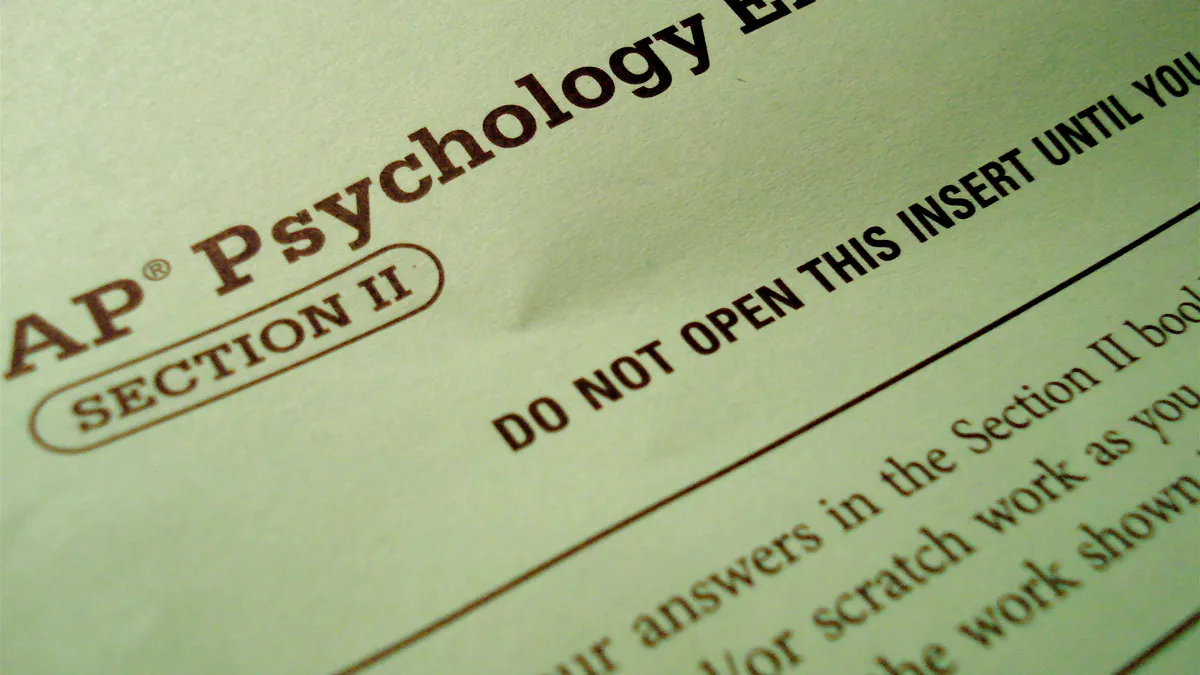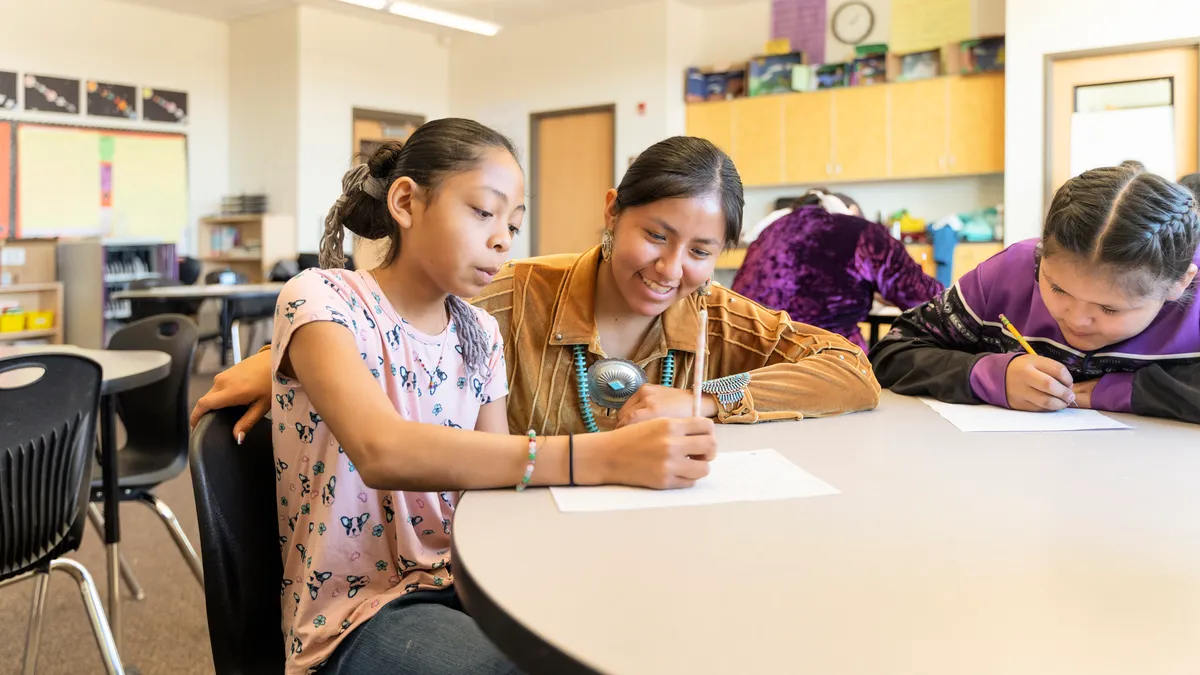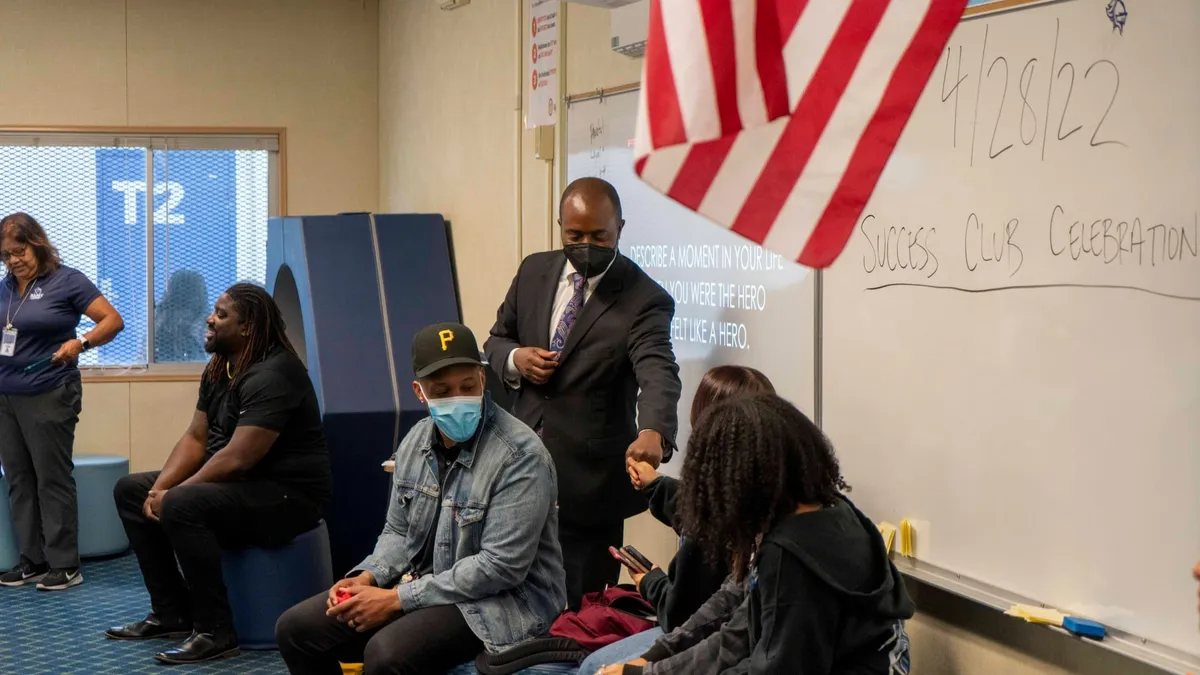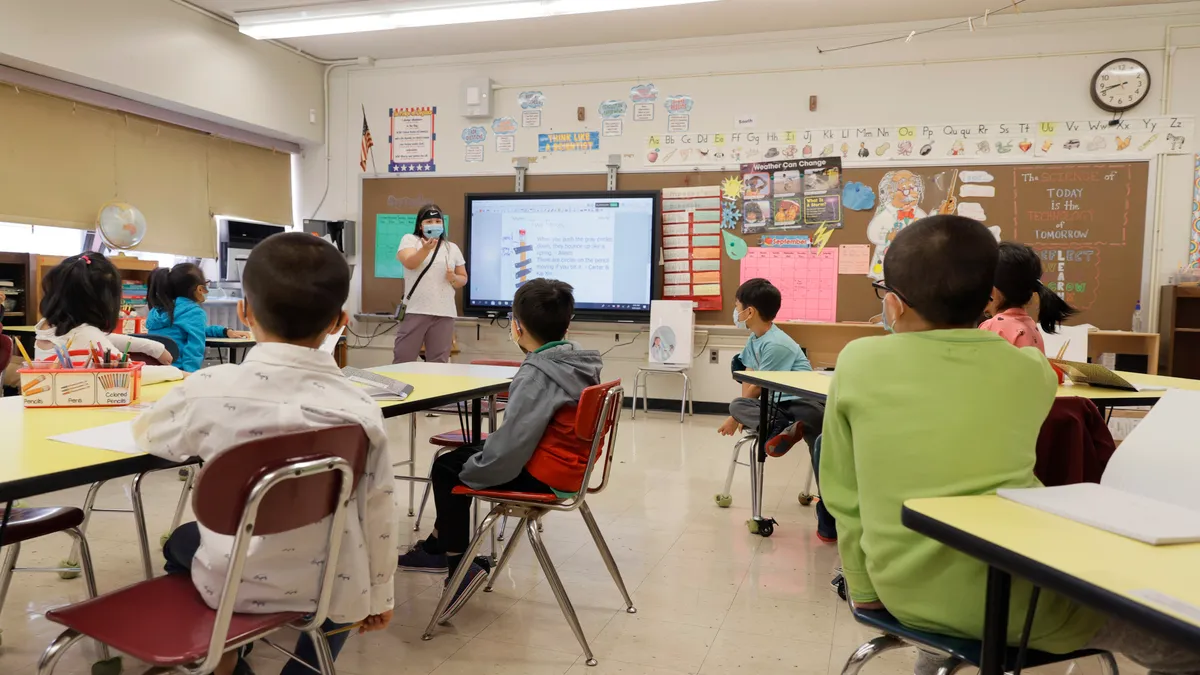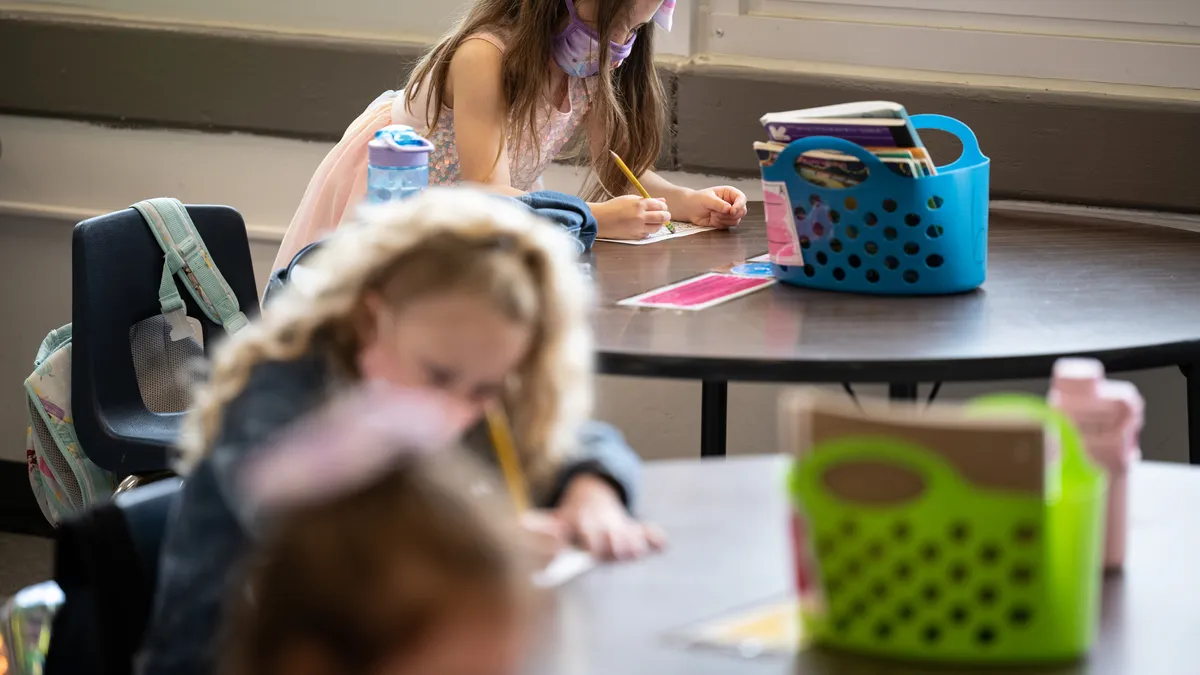This latest Pre-to-3 column shares what Head Start and leading K-12 organizations are doing to smooth young children's transition into kindergarten. Past installments of Pre-to-3 can be found here.
Transition into school is harder for new kindergartners — and their parents — when the family has never visited the new school, when they haven’t met the new teachers or other staff members, and when they are unfamiliar with the practices, routines and expectations of the classroom.
The Office of Head Start is hoping to ensure more children leaving the federally funded preschool program have those experiences and that Head Start and K-12 leaders collaborate on ways to improve the transition process.
In December, OHS, the National Association of Elementary School Principals and AASA, The School Superintendents Association, signed a memorandum of understanding agreeing to work across these systems in an effort to guide how Head Start centers and schools address transition.
“The AASA and NAESP have large memberships and can encourage public school leaders to engage with their Head Start partners, and to expand the partnership beyond traditional transition activities,” said OHS Director Deborah Bergeron, a former high school principal. “When Head Start programs and schools collaborate on education goals and alignment, parent engagement and more, along with preparing children for the kindergarten they will enter, outcomes improve for the entire community.”
The new collaboration comes as OHS is already emphasizing local transition activities in 13 sites across the country as part of a one-year Head Start-Public Schools Collaboration Demonstration Project. Teams from the sites came together for a two-day gathering last June and have also met virtually.
“The intention is really to provide the support, make sure folks are aware of the resources and help them to understand what some of the obstacles might be,” says Jennifer Boss, director of the National Center on Early Childhood Development, Teaching, and Learning, a technical assistance provider for the project that involves the expertise of nonprofit Zero to Three and six other partner organizations. Many of those resources related to transition are featured on OHS’ Early Childhood Learning and Knowledge Center.
A 50-year focus on transition
Efforts to help children from low-income households successfully adjust to school — and make academic progress along with their peers — are nothing new. As early as the late 1960s, Project Follow Through, for example, was an attempt to extend Head Start and its comprehensive approach into the primary grades, and to study the effects of different instructional models on former Head Start students.
Launched a few years later, Project Developmental Continuity was another demonstration project that aimed to create stronger connections between Head Start and K-12 schools. But an evaluation showed such relationships were “vulnerable” to curriculum mandates, economic downturns and “inevitable interpersonal and interinstitutional conflicts.”
Head Start Collaboration Offices, first authorized in 1990, have also been charged with fostering “seamless transitions and long-term success of Head Start children,” according to OHS. And Bergeron says some collaboration offices have organized "transition summits" involving Head Start and K-12 staff members.
But Boss notes efforts from the state level to encourage local connections between Head Start programs and school leaders have been “hit and miss.” The MOU between OHS and the K-12 groups helps to renew the emphasis on how both early-childhood and school leaders can support transition.
The fact Bergeron has spent most of her career in the K-12 sector is also likely to carry more weight with superintendents and school leaders than a state collaboration office, Boss says.
“Because Bergeron comes from the public school system, she has that sort of lens,” she says. “She can bring them more intentionally into the fold around this effort.”
One component of the MOU is designating October as “Bring a Principal to Head Start Month” — an initiative Bergeron began in 2018.
Stellar day reading to my @HeadStartgov Dundee classroom today as we wind down “Bring Your Principal to Head Start” month. Singing and Laughing are the best!Even Supt. can participate! #leadersinschoolreadiness #leadersmatter #LovePublicEducation pic.twitter.com/Q15HxLLHH0
— Edward Manuszak (@ManuszakEdward) October 29, 2019
While many elementary principals are gaining expertise in early-childhood education because their schools include pre-K, that doesn’t mean they get a chance to visit programs in the community.
“I think it would be a good thing, if nothing else, if the principal and the superintendent visited the preschool programs,” says W. Steven Barnett, senior co-director of the National Institute for Early Education Research, based at Rutgers University.
When New Jersey principals began to visit local preschool providers after the state established the Abbott Preschool Program, the result of a school finance lawsuit, they became more aware of the variability in quality of early learning programs, Barnett says, and then became more engaged in advocating for resources for those programs.
But Barnett suggests that it takes a lot more than having children visit their future classrooms or principals getting to know local Head Start and preschool directors in order overcome the achievement gaps associated with poverty. Making better use of assessment and observation data gathered while children are in Head Start and other early-childhood settings is one step, he said.
Some districts, such as those in Portland, Oregon, and other Multnomah County districts, provide extended summer programs for incoming kindergartners that include sessions for parents on how to support their children’s learning in the early grades. Connecting early educators with elementary school teachers to share practices and learn together — such as an effort in California supported through the state’s First 5 funding stream — is another approach experts say can benefit students.
Barnett mentioned research showing Head Start is more likely to have lasting benefits on children when they go on to attend better-funded schools. He also noted that some Abbott Preschool Program sites and Chicago’s Child-Parent Center program are examples of models that focus not just on transition but have created a “coherent systemic approach” in which “everyone is engaged in this model through 3rd grade.”
Such programs, he said, essentially launch children into a “different orbit where they can’t be pulled back.”
Bergeron adds K-12 schools can learn a lot from Head Start about family engagement and might want to work directly with Head Start centers on how to "extend this relationship beyond Head Start."
"Children (and their families) coming from Head Start have been engaged at a very deep level," she says. "The expectations of these families might be different and may require some deliberate attention."
Willingness is not the problem
It’s not that school and district leaders still have to be convinced early learning programs are important, says Dan Domenech, executive director of AASA.
“The willingness may be there,” he says, “but how do you make it happen?”
District leaders, he says, want to learn from others who have figured out the logistics of connecting with preschool providers and having them on the same campus as well. And funding, he said, is a big concern.
In partnership with Fairfax County, Virginia, for example, the Fairfax County Public Schools — where Domenech served as superintendent — operates Head Start programs, which allows the classrooms to be more integrated into the elementary schools, he says.
AASA’s Early Learning Cohort, he says, is another vehicle for administrators who want to share experiences and explore ways to overcome the barriers involved in connecting systems that typically have different standards, policies and funding streams.
Bergeron says she hopes the MOU will result in "genuine and reciprocal relationships" between schools and Head Start centers.
"Principals are very invested in assuring good outcomes for the children in their schools," she says. "Gaining an understanding of and a respect for the ways early-childhood education is different from education in the older grades is key to maintaining and strengthening the gains children make in preschool."






